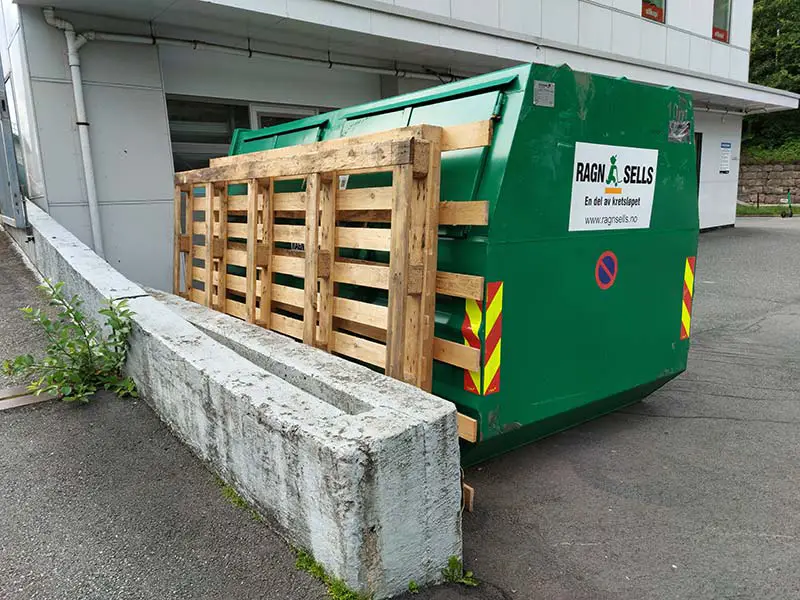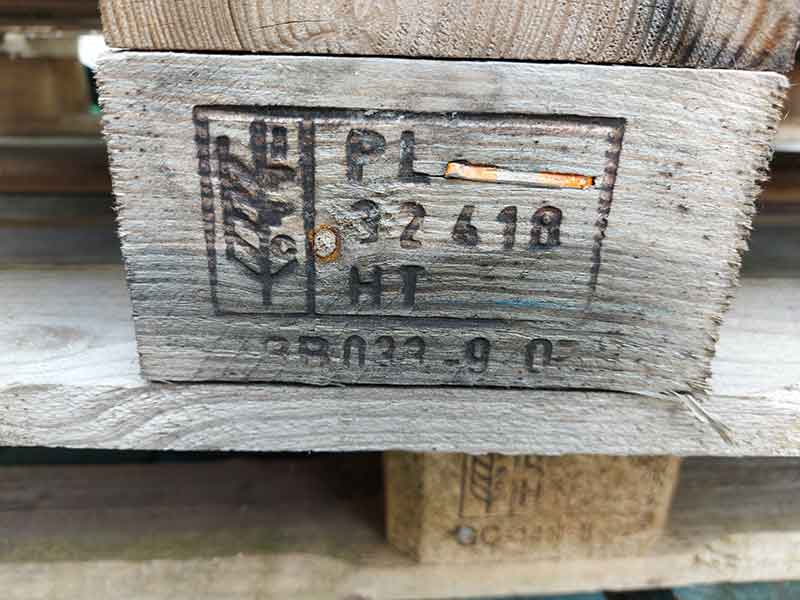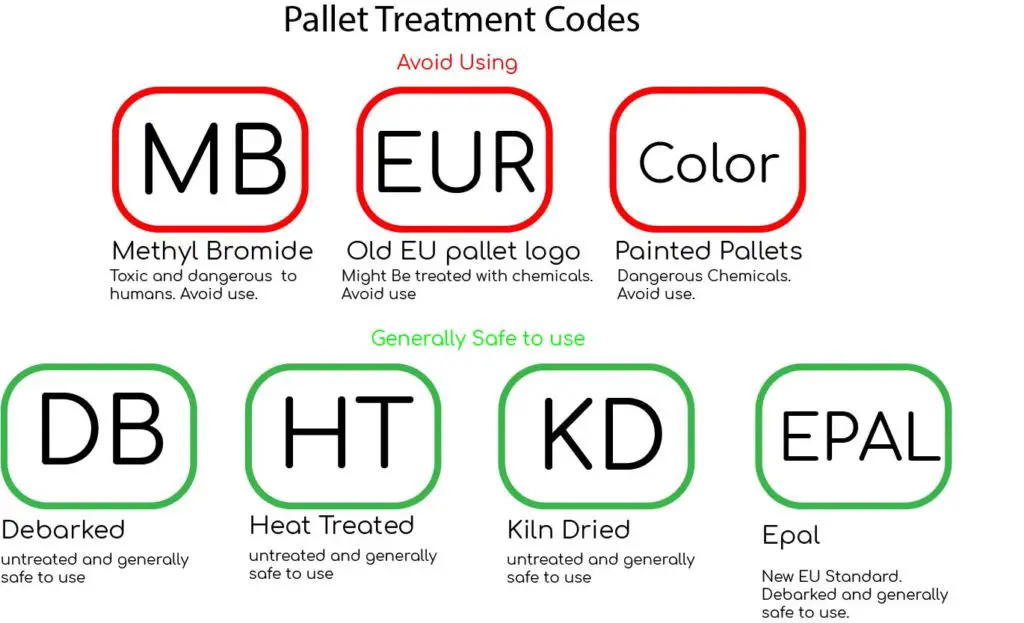Disclosure: This post may contain affiliate links, meaning I get a commission if you decide to make a purchase through my links, at no extra cost to you.
Pallet wood is cheap/free, easy to find, and can be used to make great DIY woodworking projects. This is what makes pallet wood so great. But when working with any kind of wood, it is helpful to know the type of wood you are working with. So this brings up the question. What kind of wood is pallet wood? Is it safe to use? And how do you identify the different types of wood pallets are made from?
The wood used to make pallets is generally from pine. Pine grows quickly, is easily obtainable, and is cheap. This makes for cheap disposable pallets. Pallets are also commonly made of hardwoods like oak, poplar, and cherry.
But even if you can identify the wood of the pallet, it does not mean you can use it for woodworking. There are more factors we should take into consideration before using pallet wood. For example, the wood might have been treated with toxic chemicals, or it might be of an extremely poor grade of wood, and it may also be so rough that it will break your tools when trying to take it apart.
So follow along, and I’ll show you which type of pallet wood you can and can’t use, how to identify what type of wood the pallet is made from, and what to do if you come across toxic pallets

What Wood Are Pallets Made From?
A pallet can be made from almost any type of wood. The most common types of wood to use for pallets are pine, oak, cherry, and poplar.
Which type of wood is used for a pallet depends on the price and availability of the wood in the area. The wood also has to be of good enough quality to actually bear the weight of the load that is put on it. But since pallets are normally made to be disposable after the first few uses, cheap and poor quality wood is mainly the wood used for pallets.
Pine is the most common wood used for pallets. Pinewood meets the requirements to make a cheap, load-bearing, and disposable pallet. The reason that pinewood is so cheap is that it is grown commercially on large plantations in large quantities. Pine also grows quickly which also helps with the price.
Pine is by no means the best wood to make the best pallet possible. It is just the type of wood that makes the most commercial sense to use for the industry.
Oak is the second type of wood you will come across when looking for pallet wood. Oak is more durable and stronger than pine. But oak is a hardwood that grows slower, this means that availability and prices will be higher in most areas.
Poplar pallets are also fairly common. Poplar is one of the cheapest hardwoods and is the most used hardwood for utility purposes like pallets and crates. Poplar pallets can be made of both plywood and solid wood. If they are made of plywood they are of little use to the hobby carpenter and are not worth salvaging.
Pallets made of cherry are rarer than the ones listed above. But cherry pallets are usually the ones that I like to look out for when hunting for pallet wood. You can easily identify a cherry pallet by the red tint in the wood, it stands out compared to the creamy and gray colors of poplar, oak, and pine.
The Quality of Pallet Wood
The wood used in most pallets is low grade. This does not necessarily mean that the quality of the wood is bad. But the wood used in pallets will have more deficiencies than normal lumber with more knots, twists, and will be of less desirable parts of the tree.
The job of pallets is to be the foundation of heavy objects and make it easy to move objects around. The weight of these objects will twist, turn and crack the wood. Heavy machinery is also used to move the pallets around. So pallets will look a little bit worn down after it has been used for a while.
You never know what a pallet has been carrying. It might have been meat or paint that has leaked out onto the wood. Which would then be hard to get rid of since the wood soaks it up. So be aware of pallets with heavy stainings.
Some pallets can also be made of plywood. Pallets made of plywood are of poor quality and are of no use to reclaim and use for further woodworking projects.
Pallet wood comes in three grades. Grade 1,2, and 3 (Also known as A, B, And C). I’m going to talk about the two first grades since grade 3 is of such poor quality that they are of no use for most people.
Grade 1 Pallets ( Grade A )
Grade 1 pallets are in prime condition. It has not had any repairs done to it and has little to no signs of broken board boards or damage from use. The worst grade 1 pallet will have visible damage and will soon need to be repaired but not quite yet.
Grade 2 Pallets ( Grade B )
Grade 2 pallets are in worse condition than grade 1 pallets. They have visible damage to the wood, and have been or are in need of repair. But the grade 2 pallets are still structurally sound even if they look a little bit worn out, and can still be used after a little bit of love.
Is Pallet Wood Toxic?
Pallet wood can be toxic. Some pallets are marked with the letters MB. This means that the pallet is treated with Methyl Bromide which is used to fumigate the wood and remove insects and pests. Methyl bromide can cause severe symptoms if inhaled or if you come in contact with it. So avoid palled wood that is treated with Methyl Bromide.
Check out this link if you want to read more about the use of pesticides like Methyl Bromide: https://www.healthandenvironment.org/environmental-health/environmental-risks/chemical-environment-overview/pesticides

Pallet Treatment Codes
- MB = Methyl Bromide: Toxic and dangerous to humand. Avoid use.
- EUR = Old Eu Pallet Logo: Might be treated with Chemicals. Avoid Use
- DB = Debarked: Untreated and Generally safe to use
- HT = Heat Treatet: Not tocix and generally safe to use
- KD = Kiln Dried: Untreated and generally safe to use
- Epal = New Eu Standard, debarked and generally safe to use
- Colors = Dangerous chemical, avoid use
If you are reusing pallets for anything like woodworking, firewood, gardening, or anything in general I would follow the image guide below when looking for markings. Only use pallets that are safe.

You might also come across pallets with no treatment codes. Pallets with no marking are most likely local pallets that are only being used by businesses in the area. Since they are only used locally they are most likely not treated with any kind of chemicals and are generally safe to use. But you can never know for certain that they have not been treated since there is no marking. So it is up to the user if they are willing to use pallets with no marking.
Can I Use Pallet For Firewood
Pallets that do not contain the treatment codes MB, EUR, or are painted are generally safe to use for firewood. Only use pallets that you are certain have not been contaminated or treated for firewood. Some pallets might have been carrying toxic or dangerous articles such as paint, and this can spill out and contaminate the wood. Do not use pallets that are visibly contaminated by unknown substances.
Also, if the pallet has no markings or treatment codes at all. Do not use it for firewood.
Can I Use pallet Wood For Woodworking Projects?
Pallet wood can be used for woodworking projects. But do not use pallets with treatment codes MB, EUR, or painted pallets. Pallets are a great way to get cheap wood for woodworking and can create a unique style for your projects. But keep in mind that pallets need to be obtained, disassembled, and require time and patience.
Is Pallet Wood Free?
Pallet wood is free to obtain from businesses and can easily be found outside certain shops. But working with pallet wood is usually not free. To disassemble pallets you will most likely have to use some power tools. Sawing through nails with a reciprocating saw will wear down the saw blade. Sanding down or planing the wooden boards of pallets will also cause some damage to the machines. So I would not call pallet wood for free. It is free to obtain but not free to work with.
You will also have to spend a lot of time disassembling and working the pallets to get usable wood out of them. But if you enjoy the process of reclaiming and disassembling pallet wood, you will save some money compared to going out and buying every piece of wood you need.
